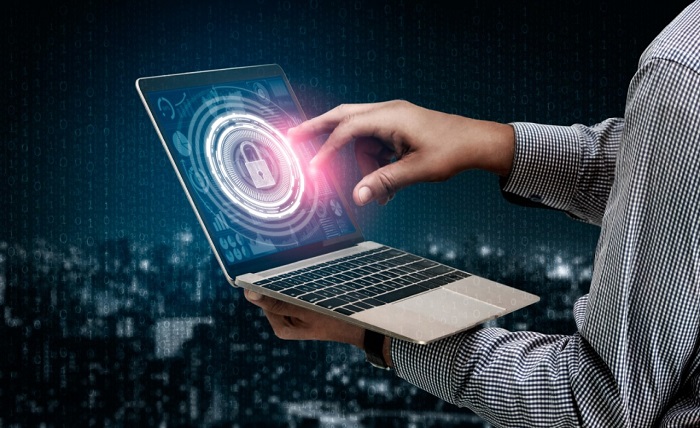Importance of Knowing the Cybercrime Statistics in Your Organizations

Cybercrime is a broad term that refers to any crime that involves the use of a computer. It could include anything from stealing someone’s money to sending pornographic material online.
It is essential to know the cybercrime statistics in your organization as they are an ongoing threat. Having a solid security plan & training your employees is crucial.
Theft
A business losing data due to a cyber attack can be devastating. It is especially true for companies that store sensitive information. A breach can lead to losing customer trust, employee productivity, & significant fines.
You may take several steps to stop these attacks from happening in the first place. The first is to know the cybercrime statistics in your organization.
Businesses that store personal data such as social security numbers, medical records, & credit card information are usually more likely to be targeted by hackers. However, even lower-risk industries can be victims of data breaches if they do not have adequate cybersecurity measures in place.
Economic cybercriminals use phishing emails, social engineering, & malware to trick people into revealing their financial information or providing access to their network. They then use this information to steal funds or open new accounts in their names.
Criminals are becoming more thoughtful about making these phishing emails look legitimate. They may include logos from financial institutions & clear signature lines. They also sometimes impersonate friends, family members, or professionals you might know.
It is all done to lower your guard & make you more likely to click on the link in the email. The scammers hope you will, & if you do, they can download malicious software onto your computer or gain access to your passwords & usernames.
Identity theft is a common form of cybercrime. It occurs when a criminal uses stolen credentials, such as a Social Security number, to open accounts or make purchases. It is a type of fraud & a serious crime that can damage your reputation & ruin your life.
Fraud
When it comes to cybercrime, knowing the cybercrime statistics in your organization is a crucial part of keeping your data safe. These stats are often updated daily, so it’s essential to understand how you can keep your organization & your customers protected from fraud.
One of the most prevalent categories of cybercrime is fraud, which can take many forms. These can include theft of personal information, credit card fraud, or phishing scams. These are all serious matters & should be taken seriously.
The most obvious way to prevent fraud is by ensuring you don’t give out your personal information over the phone or in an email unless it is from someone you trust. The same goes for websites that you visit, as well.
You should also regularly review your financial statements & credit cards to look for any unauthorized transactions. It will help you detect if anything is wrong & report it immediately.
Criminals often target small transactions to test their validity before trying to cash out on more considerable sums of money. These kinds of attacks are known as “smoke,” & reporting them quickly is vital.
Banks & Fintech services are trying to use data science models to predict anomalies, identify fraud, & reduce spending. However, this is challenging, as banks need to keep up with new technology & changes in how people access their accounts.
Cybercrime is a growing problem, & keeping track of these threats is becoming more challenging. Fortunately, several resources are available to assist organizations in guarding against these harmful dangers. It includes cybersecurity training & security software, which can help you keep your company’s data safe.
Identity Theft
Keeping track of the cybercrime statistics in your organization is essential for protecting the organization’s information & ensuring compliance with legal & regulatory requirements. The risk of cybercrime is increasing, & it is becoming more challenging to protect against these threats.
The most common type of cybercrime is identity theft, which occurs when someone uses another person’s PII–such as their Social Security number, password, bank account number, or other personal information–to steal money, open new accounts, get utilities & insurance, obtain a tax refund or commit crimes. It happens in several ways, including through data breaches & malicious software.
You should regularly monitor your credit & financial statements to identify stolen PII. Watch for unusual transactions–such as credit card purchases you didn’t make, unexplained withdrawals, or calls from collection agencies about debts that don’t appear on your statements. You should also contact the three major credit bureaus & freeze your account if you suspect fraud or identity theft.
Identity thieves can also steal your PII through the mail. Check your mailbox for unsolicited mail, particularly bills & health insurance forms with your personal information printed.
Some common tactics identity thieves use include fraudulent email attachments & pop-up windows that secretly plant malware on your computer. Avoid opening emails from unknown senders, & always double-check websites before providing any personal information, including your date of birth or social security number.
Cyber attacks on businesses are now increasingly frequent, targeted, & complex. These attacks can disrupt business operations & cause severe damage to the organization’s assets & infrastructure. It is why it is essential to be able to protect against these attacks & prevent them from happening in the first place.
Hacking
Cybercriminals are increasingly using advanced techniques to bypass cybersecurity measures, so it’s essential to know the cybercrime statistics in your organizations. For example, a recent survey found that phishing scams are the number one security threat. These scams can lead to data breaches & other cyber crimes.
Hacking is a common form of cybercrime that involves stealing & distributing information. It can be done remotely through email attachments, social media posts, & malicious websites. Hackers often try to use the victim’s computer to spread malware or steal personal information.
To begin with, a hacker needs to identify & monitor their target. They must also find an entry point into their target’s system or network.
Depending on the type of hacking, the process can be lengthy. For example, a hacker might need to find an entry point in a wireless network, which means they have to take the time to look for vulnerable spots & then hack into them.
They may also want to target a specific person or organization, which means they need to qualify the victim by sending them an ad, email, or other messages. They also might need to contact the victim & convince them to give them money or personal information.
These attacks can be dangerous, resulting in severe financial losses. They can also be highly disruptive to business operations & negatively impact the company’s reputation. Fortunately, many ways to protect your organization from hacking attacks & other cybercrimes exist. The most important thing to remember is that updating your systems & software will protect you from numerous incidents.
Cyberterrorism
Having a thorough understanding of the cybercrime statistics in your organization is essential. It will allow you to assess your security risks & make the appropriate changes. It also will help you avoid data breaches & protect your reputation.
There are many types of cyber attacks, but some of the most common include social engineering, ransomware, & credential stuffing. The latter is an attack where hackers use stolen or leaked login credentials to access a network.
While cyberterrorism has yet to be used on a large scale, the future may see more sophisticated attacks on a global level. It is crucial for businesses to monitor & upgrade their systems & networks regularly & has a solid cyber defense policy in place.
In addition to causing destruction, cyberterrorists aim to disrupt critical infrastructure systems, such as a nation’s water supply or nuclear power grid. They may also try to instill fear & panic in public.
As the number of cyberattacks continues to increase & become more complex, businesses worldwide are increasingly worried about the threat of a severe cyber attack. Risk Based Security reports that in the first six months of 2019, 4.1 billion records were exposed via data breaches.
A recent survey found that most academics believe policymakers & researchers require a clear definition of cyberterrorism. However, there are also some significant disagreements & debates about how the term should be limited.
The 118 respondents were asked to rate how vital their view was on three related questions. Here is the answer: The most critical issue was the relevance of violence against people or property in a cyberterrorism scenario (see chart 4). A significantly higher proportion of respondents selected this as an essential factor than those who did not.




